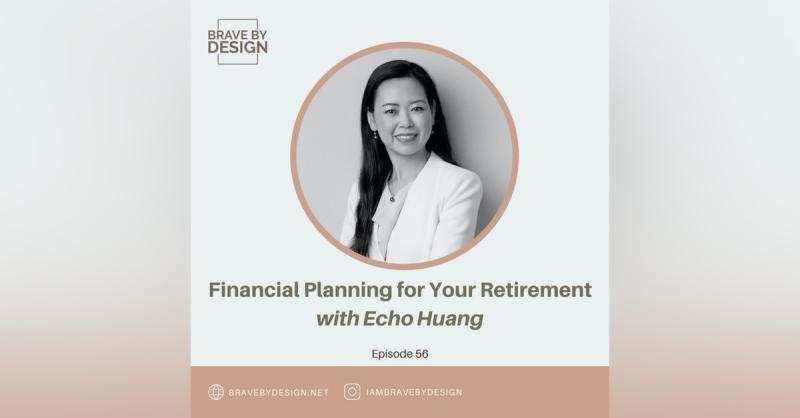Are All Piggy Banks Pink?
Do you realize your child’s financial education started with their first piggy bank? I can imagine you explaining the value of saving. Even though years have passed, don’t let your child’s age interfere with continuing to educate them about saving. Share your knowledge. Talk to them about opening an IRA.
Last time, I began sharing information with you about my eight tax strategies: tax brackets, diversifying your income sources, and the differences between Roth IRA and Traditional IRA.
Today, I want to continue talking about tax strategies and the ways that are available to help your children, your charities, and yourself.
Strategy 2: Help Your Children Fund Their Roth IRAs
So many people are more concerned about their children than themselves, which in and of itself is not a bad thing, but stay with me on this one. They see a terrible job market, insecure jobs, or a lack of full employment. Their children aren’t getting the jobs for which they went to college. They have student loans.
In today’s economy, children often don’t have a great financial foundation or an understanding of basic financial planning. Therefore, many people are asking: Is there something we can do to help out our children in the long term and into retirement?
If your children have part-time or summer jobs, you should encourage them to open a Roth IRA and then help them fund up to a maximum contribution of $6,000. Even if they only make $4,000 per year and save $2,000 for their Roth IRA, you can match that with another $2,000. Those starting out in their career should also contribute enough to their 401(k) plan to get the benefit of their employer’s full match.
If the employer matches fifty cents to a dollar of contribution up to 6 percent of compensation, your child must contribute at least 6 percent of his or her pay in order to receive the full match (i.e., 3 percent of his or her pay). This gives a 100 percent return on his or her investments without much risk.
When they are starting out in their career, generally it is better to contribute to a Roth 401(k) than a traditional pretax 401(k), as their income is likely to increase in the future. This will encourage them to start saving now and invest early for their retirement.
The long-term growth of these tax-free retirement accounts is significant because they can leave it there for fifty years. This comes back to the idea of meticulous planning: by accumulating small amounts consistently over time, even a 5–6 percent rate of return compounded over fifty years will become a big account.
The Roth IRA allows you to pay taxes now at a certain rate instead of paying taxes later at an uncertain rate. This is a great way to hedge against future income tax increases.
Strategy 3: Be Creative with Charitable Giving
If you have any appreciated stocks in your non retirement accounts, instead of writing checks to charities or using payroll deductions at work, you can choose to donate the appreciated securities that you have held for at least one year to the charities. You can deduct the market value of the securities on the date of gifting as a charitable deduction.
This is a better way than paying taxes on the realized capital gains when you sell them and then writing checks to the charities.
If you want to have a major charitable deduction to lower your taxable income in one year, but are uncertain about which charities and how much you want to give each year in the future, you can consider setting up a donor-advised fund through your financial advisor and transfer the appreciated securities on which you have unrealized long-term gains and deduct the fair market value as a charitable deduction on your tax returns in the year you fund the donor-advised fund.
A charitable remainder trust can avoid capital gains taxes on appreciated assets, allowing you to receive income for life and receive a tax deduction now for a charitable contribution that will be made after your death. A charitable lead trust can avoid taxes on appreciated assets, earn an immediate tax deduction, and still provide an inheritance for your heirs later.
Strategy 4: Open a Health Savings Account
A health savings account (HSA) is an important part of any tax diversification strategy. It also offers triple tax benefits. Think of your retirement savings (IRAs and 401(k)) as going to pay for other retirement expenses such as food, shelter, and clothes, and you can see that you need to jump-start saving in your HSA for your health care costs (including Medicare premiums) in retirement.
An HSA can be a powerful tool to help you save and invest now and then pay for your qualified medical expenses during retirement. First, contributions are made with pretax dollars through payroll if your employer offers it. If not, you can purchase a high deductible health plan (HDHP) on your own in the insurance market, set up your own HSA online, and make contributions before the tax return filing deadline.
Distributions are income-tax-free if you use them to pay for qualified medical expenses. Typical retiree expenses on health care are often as high as $500/month, much of which are HSA-eligible qualified medical expenses.
An HSA balance doesn’t expire. Unlike a Flexible Spending Account (FSA), you don’t need to spend the balance within the calendar year. As long as your medical expenses aren’t reported on tax returns, you can be reimbursed from your HSA many years from now.
Unlike an IRA, the HSA balance can also be distributed before age 59 ½ without incurring taxes and penalties.
Today, we continued our eight tax strategies discussion by reviewing; Helping Your Children, Being Creative with Charitable Giving, and setting up a Health Savings Account. I hope I have encouraged you to talk to your children about opening a Roth IRA. As I mentioned before, in today’s economy, children often don’t have a great financial foundation or an understanding of basic financial planning. It is my deepest desire to help you help your children as well as yourself with my blogs and my book. When I talk to you again, I’ll review other tax strategies to maximize your tax savings.
I am curious to know: how many of you had a piggy bank? Did you like to save? Let’s share below.













